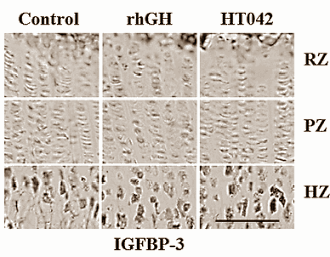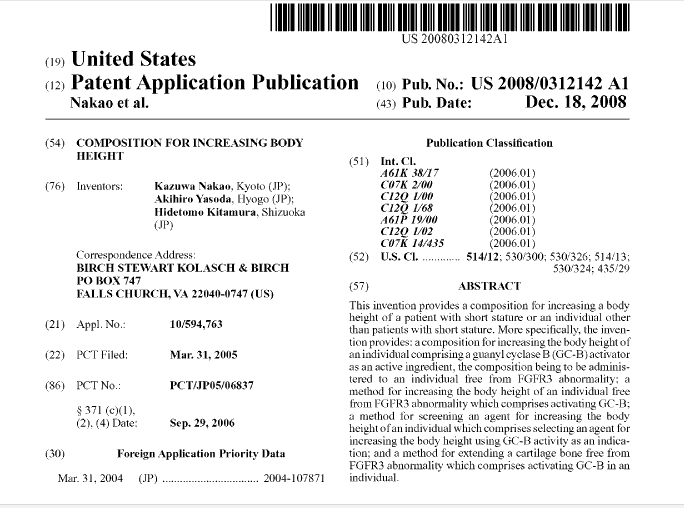This post is for information and resources reasons only. No information on height increase is posted here. All of the names and listing was actually found from the website Tallpeople.com (source HERE). This is not my information but a reprint since I thought it was nice information to know and have on this website. Just another resource to use and have around.
This is a list of the tallest living women in the world, 6’9″ (205cm) or taller.
236cm (7 Feet 9 Inches)
Defen Yao [Nationality: China, Born: July 15, 1972]
225cm (7 Feet 5 Inches)
Maria Feliciana Santos [Nationality: Brazil, Born: 1945]
7 Feet 1 Inch (maybe actually be 7 Feet 3 Inches)
Urmila Kumari Chaudhari
213cm (7 Feet 0 Inches)
Uljana Semenova [Nationality: Latvia, Born: March 9, 1952]
Lyuba Shilo
210 centimeters (6 Feet 11 Inches)
Marvadene Anderson
Tanya Angus
Gwen Bachman
Alana Renaud [Nationality: USA, Born: 1980]
Gitika Srivastava
209 centimeters (6 Feet 10 Inches)
Zorana Todorovic [Nationality: Serbia, Born: December 30, 1989]
208 centimeters (6 Feet 10 Inches)
Ellen Bayer [Nationality: USA, Born: 1968]
Suzy Bendegue
Zainab Bibi
Malee Duangdee
Jaana Kotova
Elena Kravchenko [Nationality: Belarus, Born: 1979]
Li Liu
Silvia Mesa [Nationality: Spain, Born: 1980]
Jessica Pardoe
Dharshani Sivalingam
Darina Yegerova
Ebru Nur Ozyilmaz
206 centimeters (6 Feet 9 Inches)
Nelly Alisheva (Fonova) [Nationality: Russia, Born: 1983]
Meme Besnoin [Nationality: USA, Born: 1987]
Marina Burmistrova [Nationality: Russia, Born: February 3, 1974]
Allyssa DeHaan [Nationality: USA, Born: 1988]
Antje Dethloff
Ekaterina Gamova
Elisane Silva
Suzy Gyarfash
Lindsay Hayward [Nationality: USA, Born: 1987]
Kathleen McIntyre
Lyubovi Pascalenco
Oleksandra Prystupa
Wang Ting
Connie Waikle
Wei Wei
Caroline Welz [Nationality: Germany, Born: 1986]
[Biography, Discussions, Photos, Links]
Ugyur Yushaguli
205 centimeters (6 Feet 8 1/2 Inches)
Young-Hee Kim
Yulia Merkoulova
Haixia Zheng
Rambolina
Ekaterina Lisina
Other Notable tall women
204 centimeters (6 Feet 8 1/2 Inches)
– Kristina Alminaite (Lithuania)
– Milena Boteva (Bulgaria)
– Sarah Foley (UK)
– Katarina Gaertner (Germany)
– Eva Giauro (Italy)
– Anna Kajalina (Estonia)
– Sylvia Klemmt (Germany)
– Martine Lefebvre (France)
– Rose-Marie Scheffler (France)
– Svetlana Singh (India)
203 centimeters (6 Feet 8 Inches)
– Kylee Ballensky (USA)
– Rita Besa (Zambia)
– Vasso Beskaki (Greece)
– Branka Bogunovic (Serbia)
– Elizabeth Cambage (Australia)
– Kristina Cesnaviciute (Lithuania)
– Kelly Ditto (CA, USA)
– Anne Donovan (USA)
– Katie Feenstra (MI, USA)
– Heidi Gillingham-Jackson (USA)
– Barbara Hartman Lynn (USA) – 203cm (6-8)
– Anke Hillebrand (Germany) – 203cm (6-8)
– Caroline Huttula (Sweden) – 203cm (6-8)
– Julia Kiseleva (Uzbekistan) – 203cm (6-8)
– Dominique Luijckx (Netherlands) – 203cm (6-8)
– Charlotte Lusschen (USA) – 203cm (6-8)
– Joyce Maddox (USA) – 203cm (6-8)
– Elena Matveeva (Ukraine) – 203cm (6-8)
– Christa Morriss (USA) – 203cm (6-8)
– Agnes Nemeth (Hungary) – 203cm (6-8)
– Lindsay Prewitt (USA) – 203cm (6-8)
– Rhonda Smith (USA) – 203cm (6-8)
– Maria Stepanova (Russia) – 203cm (6-8)
– Amanda Stringer (USA) – 203cm (6-8)
– Lindsay Taylor (USA) – 203cm (6-8)
– Olga Zhuzhgova (Russia) – 203cm (6-8)
202 centimeters (6 Feet 7 1/2 Inches)
Olga Potashova (Russia)
Katja Bavendam (Netherlands)
Tracey Braithwaite (Australia)
Razija Brcaninovic-Mujanovic (Bosnia)
Eun-Ju Ha (South Korea)
Svetlana Rodionova (Russia)
Danila Silveira de Mendonca Fabbri (Brazil)
Isis de Melo Nascimento (Brazil)
Pascale van Roy (Belgium)
Notes: (Written by the other writer of course)
There are a few criteria for this list.
1) Only women whose heights are verifiable to be true will be added to the list. People whose height cannot be verified (or hoax) will be listed at the bottom with an asterisk denoting the lack of verification.
2) Women whose height may have decreased due to their age will be denoted as such. We will try to list the actual height in the list, with a side note for her decrease in height. A few of the height statistics come from sources whose claims of height may be different due to conflicts of interest. These stats are denoted as such.
If you know of any information which could help improve this list, reply to this thread to add more sources and verifications.
———————————————–
Here is another list of the tallest women in History. Note that some of the women on the list are no longer living. I found the list from the Top20List.com website link HERE.
1. Trijntje Keever, 8’4.4″, 255.0cm
The oldest and tallest woman in recorded history. She lived from 1616 to 1633.
2. Zeng Jinlian, 8′ 2″, 248.9 cm (Most sources she would be 8′ 1″ if corrected for spinal curvature)
Zeng was the tallest female ever recorded in medical history. She passed away in 1982.
3. Yao Defen, 7’8″, 233.7cm
Her gigantism is due to a tumor in her pituitary glad which I believe releases the HGH (Human Growth Hormone). There were disputes about who was taller – Yao or Sandy.
4. Sandy Allen, 7’7″, 231.1cm
Recognized as the tallest woman during her life according to Guinness World Records. She passed away in August 2008
5. Maria Feliciana Santo, 7’5″, 226.1cm
6. Margo Dydek, 7’2″, 218.4cm
Dydek is the tallest female basketball player ever to set foot on that court.
7. Svetlana Singh, 7’2″, 218.4cm (actually been documented by thetallestman.com to be actually around 6′ 8″)
She is not just very tall herself, but she has the tallest baby as well.
8. Zainab Bibi, 7’2″, 218.4cm
Zainab Bibi is now settled in the UK after getting an asylum their on grounds that her height is making her life very hard in Pakistan
9. Urmila Kumari Chaudhari, 7’1″, 215.9cm
I believe she is the tallest person in Nepal
10. Lyuba Shilo, 7’0″, 213.4cm
Lyuba is Ukraine’s tallest woman
11. Ulyana Semenova, 6’11”, 210.8cm
She used to be the tallest basketball player in her time.
12. Gwen Bachman, 6’11”, 210.8cm
13. Gitika Srivastava, 6’11”, 210.8cm
14. Zorana Todorovic, 6’10.5″, 209.6cm
15. Ellen Bayer, 6’10”, 208.3cm
16. Jaana Kotova, 6’10”, 208.3cm
Yet another tall basket ball player.
17. Silvia Mesa, 6’10”, 208.3cm
One of the tallest basket ball players
18. Elena Kravchenko, 6’10”, 208.3cm
She is at least a head taller than everyone
19. Amazon ISIS, 6’9.5″, 207.0cm
20. Darina Yegerova, 6’9.5″, 207.0cm (was found by guinness records to be around 6′ 7″)
She holds the record for the world’s longest legs




